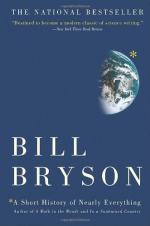
|
Part 1, Chapter 1
1. What are so small that the dot on the letter "i" could hold 5 billion of them?
(a) Quarks.
(b) Viruses.
(c) Bacteria.
(d) Protons.
2. When was the Big Bang Theory first proposed?
(a) 1960s.
(b) 1920s.
(c) 1790s.
(d) 1850s.
3. Had the universe formed just slightly differently:
(a) Our solar system would have ten times more planets.
(b) Earth would have seven moons.
(c) Planets would be flat instead of round.
(d) Mankind would not exist.
4. The British astronomer Martin Rees hypothesizes that there could be an infinite number of what?
(a) Subatomic particles.
(b) Different universes.
(c) Speeds of light.
(d) Electromagnetic frequencies.
5. According to Einstein's theories, what is the nature of space?
(a) It is a flat plane.
(b) It has missing points.
(c) It is a straight line.
(d) It curves.
6. Our universe is at least how many light-years wide?
(a) 50 million trillions.
(b) 5 trillion.
(c) 350 trillion.
(d) 100 billion.
Part 1, Chapter 2
7. The fact that Pluto has a moon was not discovered until:
(a) 1965.
(b) 1978.
(c) 1936.
(d) 1991.
8. When was Pluto discovered?
(a) 1892.
(b) 1957.
(c) 1930.
(d) 1876.
(read all 180 Multiple Choice Questions and Answers)
|
This section contains 4,297 words (approx. 15 pages at 300 words per page) |

|




